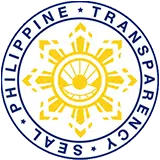Introduction
Education is a fundamental right for every child, and in the Philippines, it is compulsory for children to attend school from grade school to high school. In this blog post, we will explore the educational system in the Philippines, specifically focusing on junior high school and senior high school.
Junior High School
Junior high school in the Philippines typically covers grades 7 to 10, with students aged around 12 to 16 years old. During this stage, students undergo a comprehensive curriculum that builds on the foundation laid during their elementary years.
The curriculum in junior high school is designed to provide a well-rounded education, encompassing subjects such as English, Filipino, Mathematics, Science, Araling Panlipunan (Social Studies), Edukasyon sa Pagpapakatao (Values Education), and Physical Education. In addition to these core subjects, students also have the opportunity to explore elective subjects, including Technology and Livelihood Education (TLE), Music, Arts, Physical Education, and Health (MAPEH), and Home Economics.
At the end of junior high school, students are required to take the National Career Assessment Examination (NCAE), which helps them identify their strengths and interests as they prepare to move on to senior high school.
Senior High School
Senior high school in the Philippines covers grades 11 and 12, with students aged around 16 to 18 years old. This stage of education focuses on preparing students for their chosen career paths or further studies.
The senior high school curriculum is divided into two main tracks: the Academic Track and the Technical-Vocational-Livelihood (TVL) Track. The Academic Track is further divided into four strands: Accountancy, Business, and Management (ABM); Humanities and Social Sciences (HUMSS); Science, Technology, Engineering, and Mathematics (STEM); and General Academic Strand (GAS).
The TVL Track, on the other hand, offers various specializations that equip students with technical and vocational skills in fields such as culinary arts, information technology, agriculture, tourism, and many more. This track aims to prepare students for immediate employment or entrepreneurship opportunities after high school.
Upon completing senior high school, students receive a Certificate of Completion and have the option to pursue higher education in colleges or universities, enroll in technical-vocational courses, or enter the workforce.
Conclusion
Junior high school and senior high school education in the Philippines play a crucial role in shaping the future of students. By providing a comprehensive curriculum and diverse career tracks, the educational system aims to equip students with the necessary knowledge and skills to succeed in their chosen fields.
Whether students choose to pursue further studies or enter the workforce after high school, the education they receive during these formative years lays the foundation for their future endeavors.

